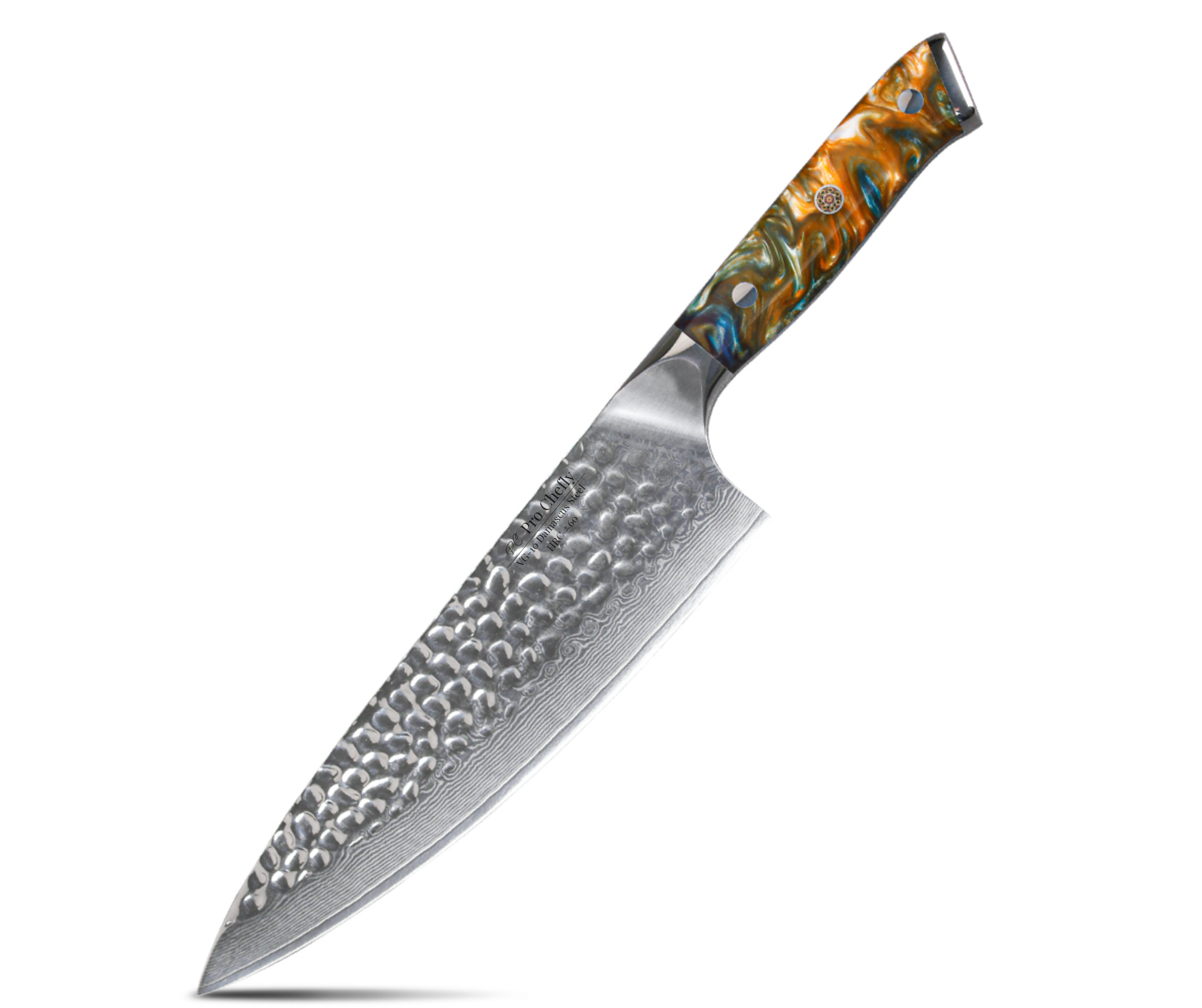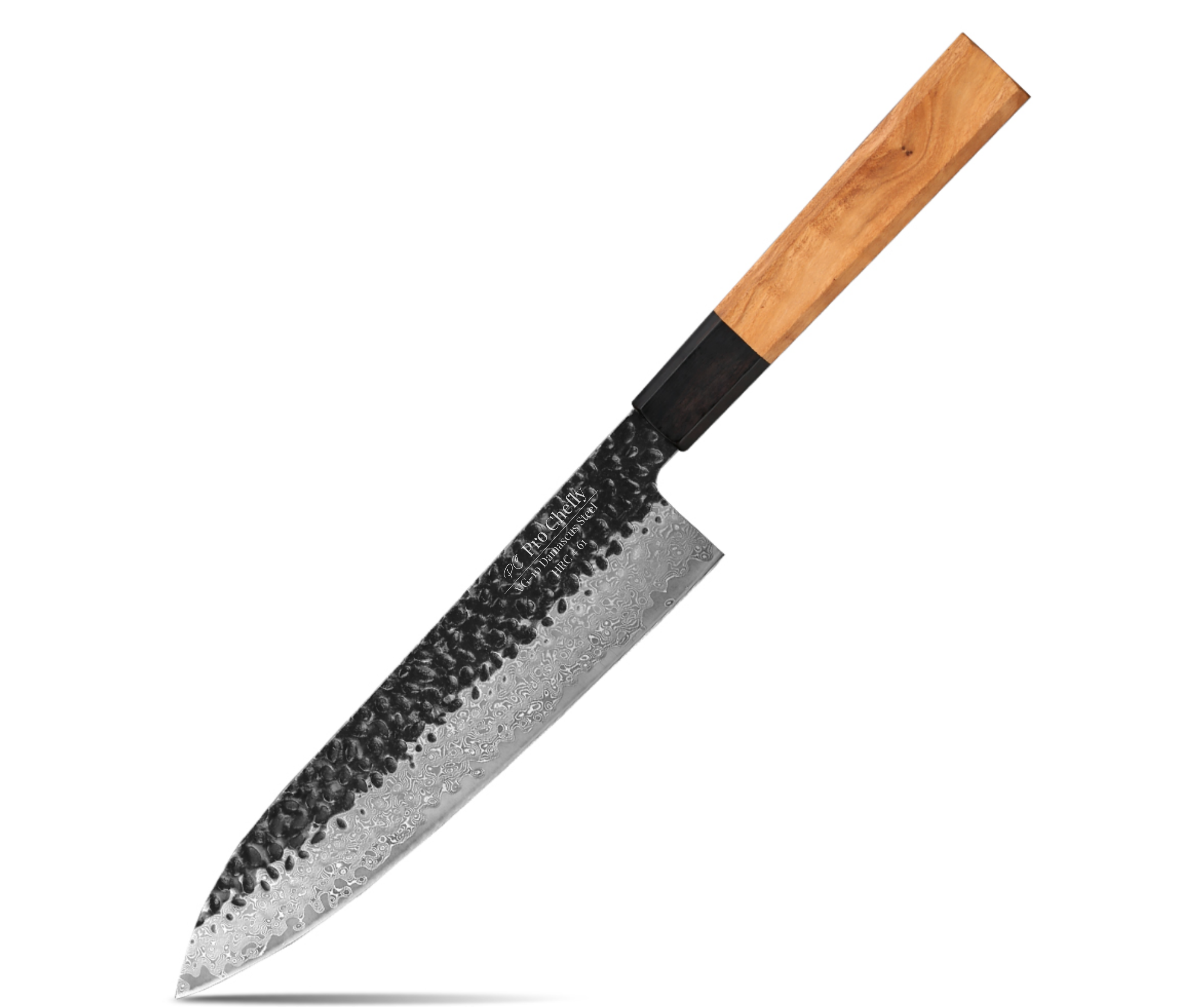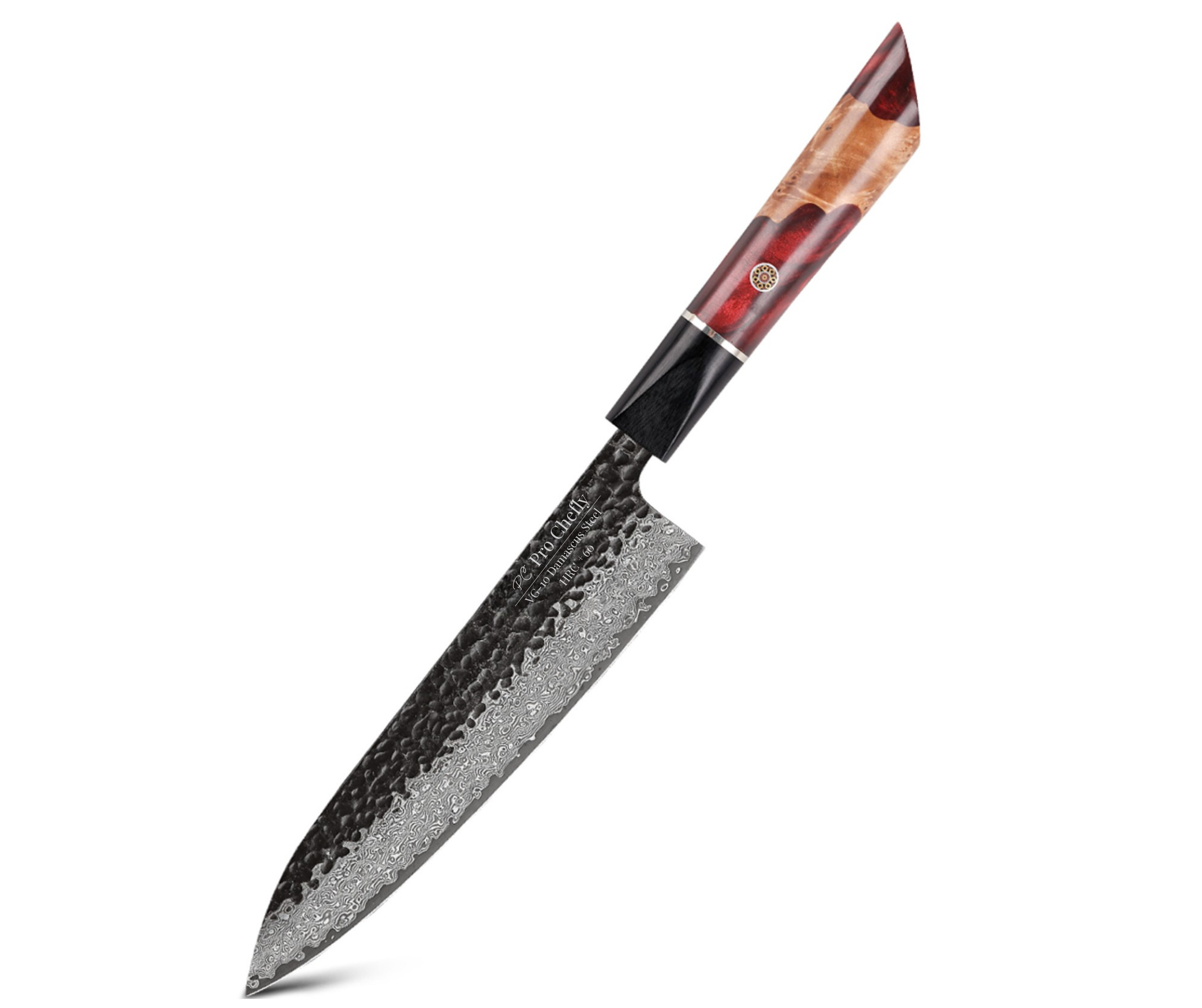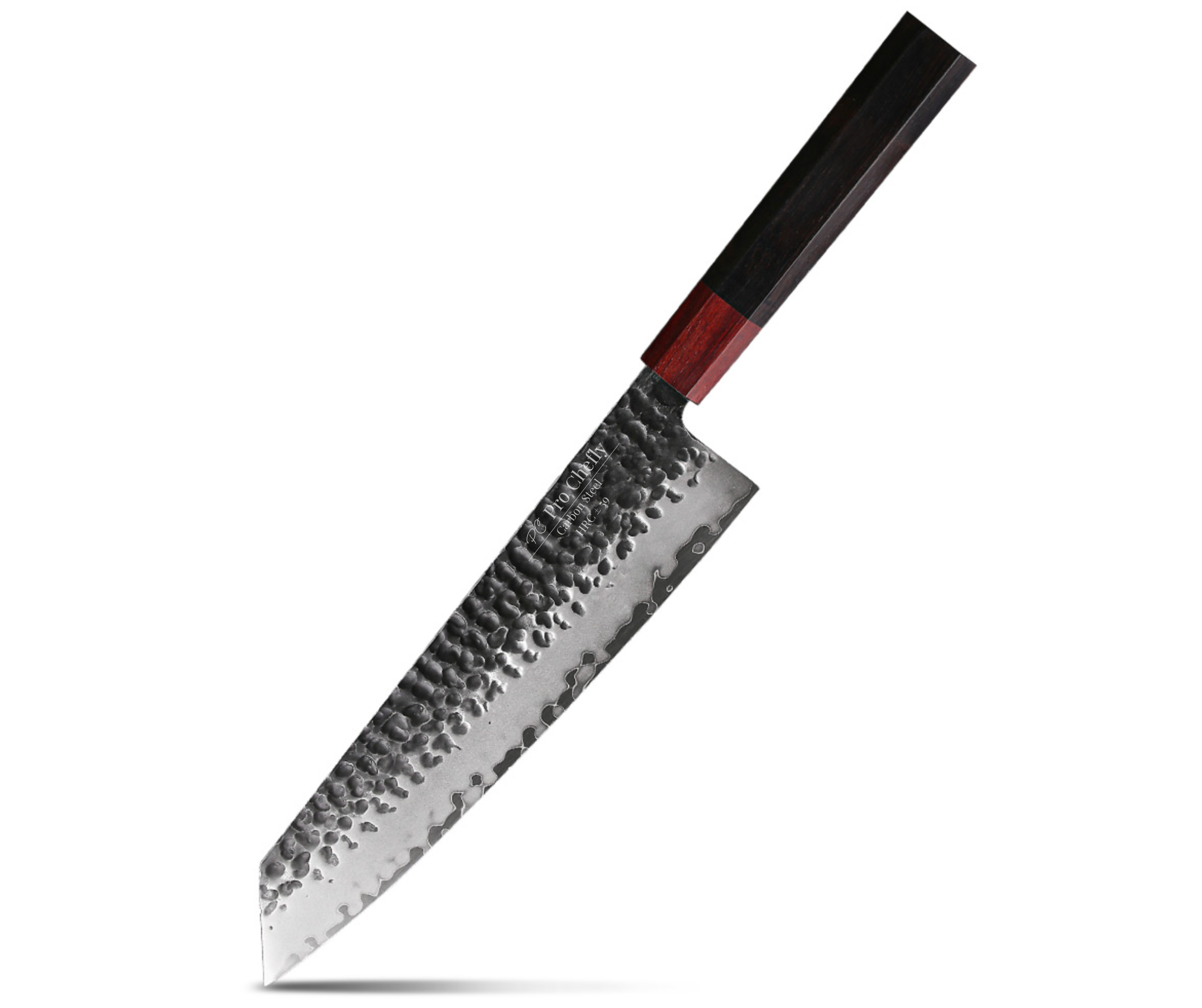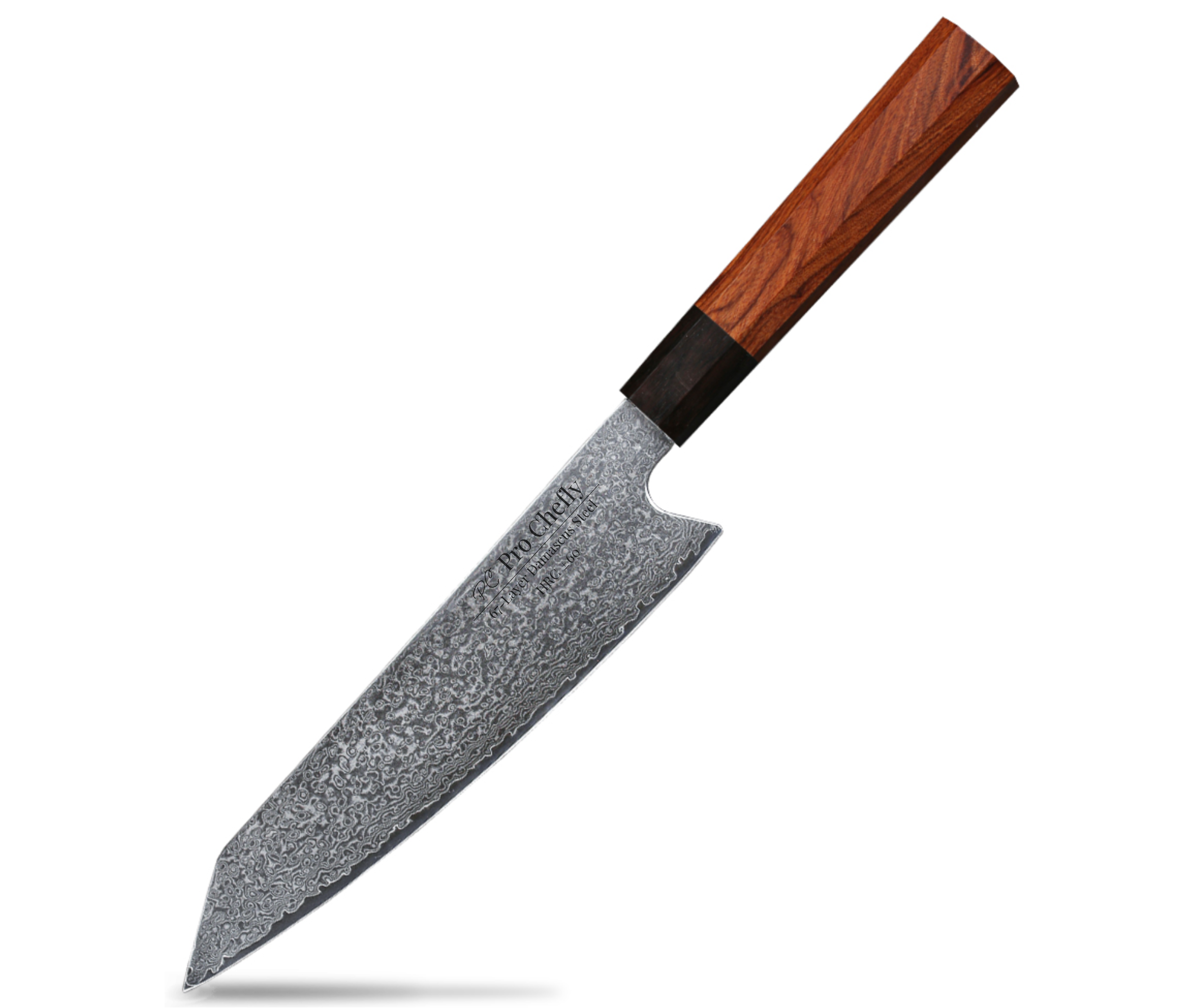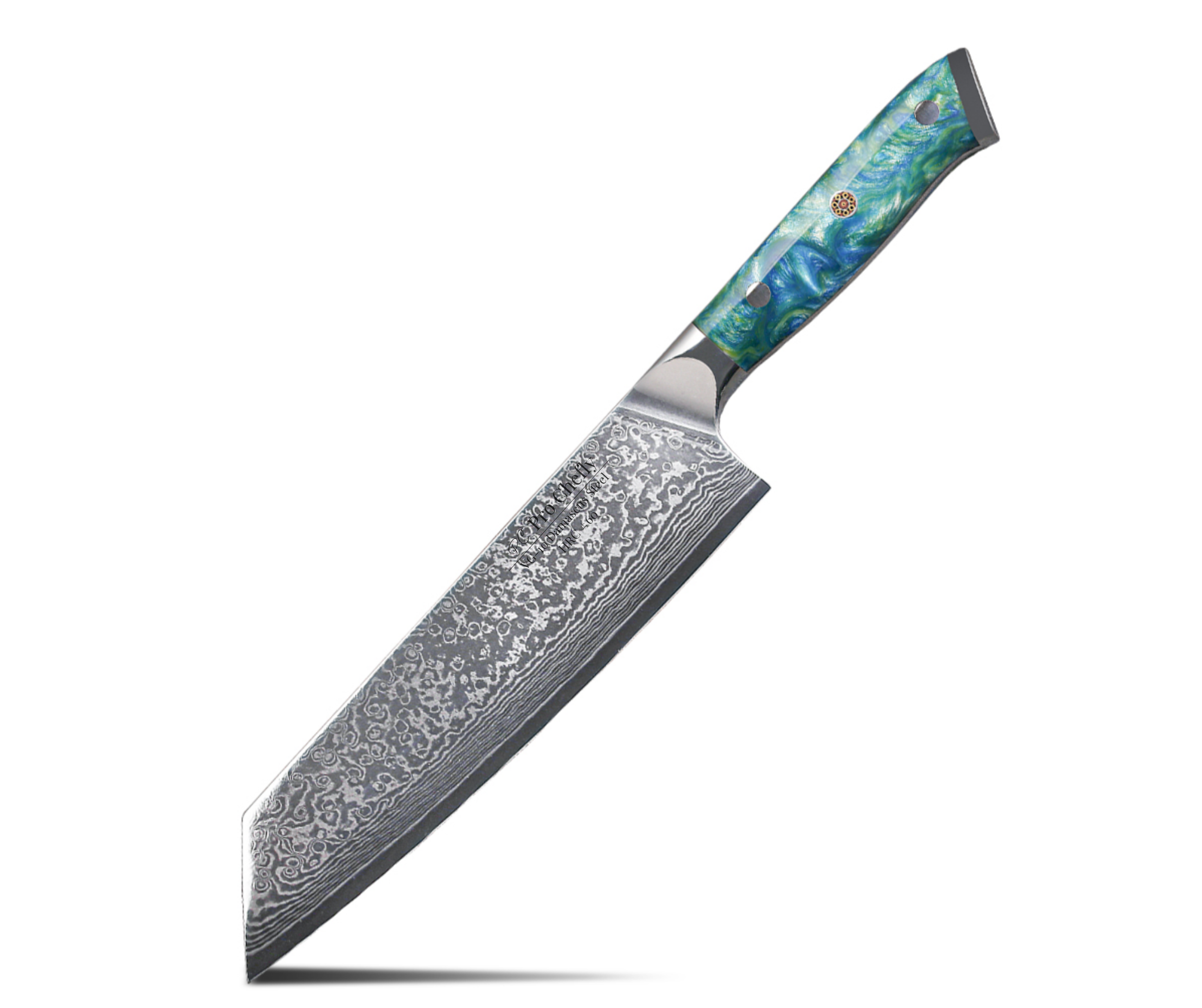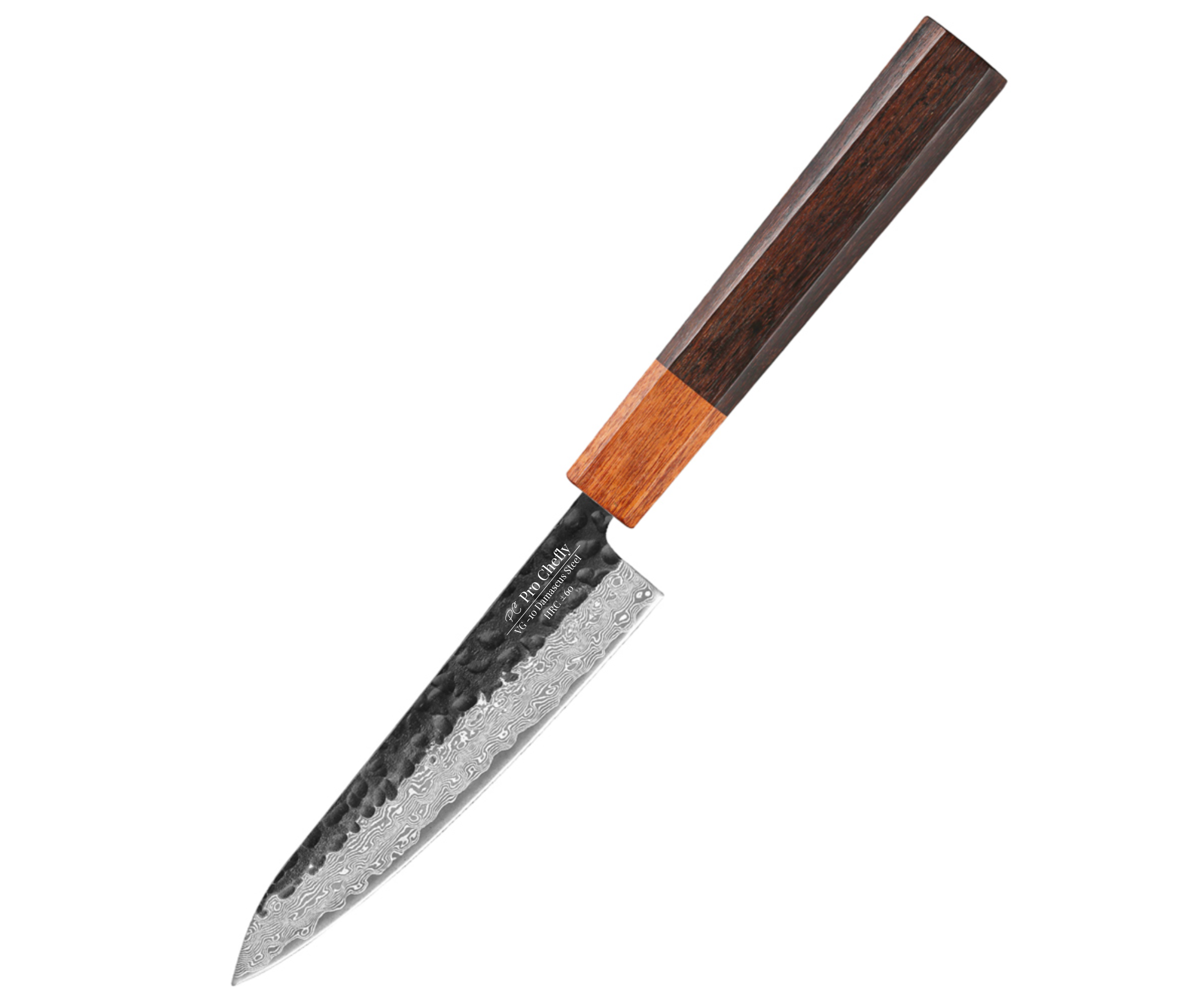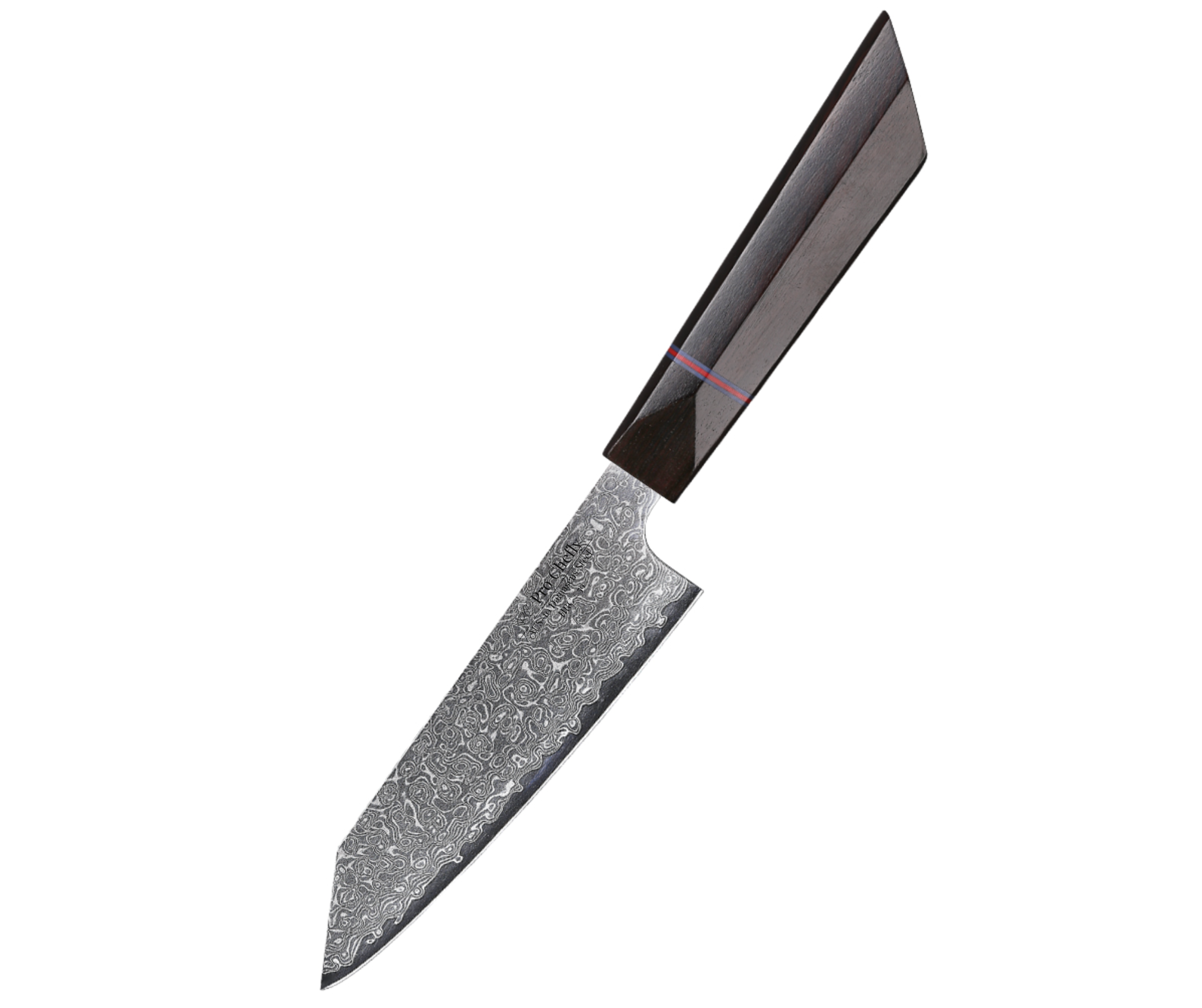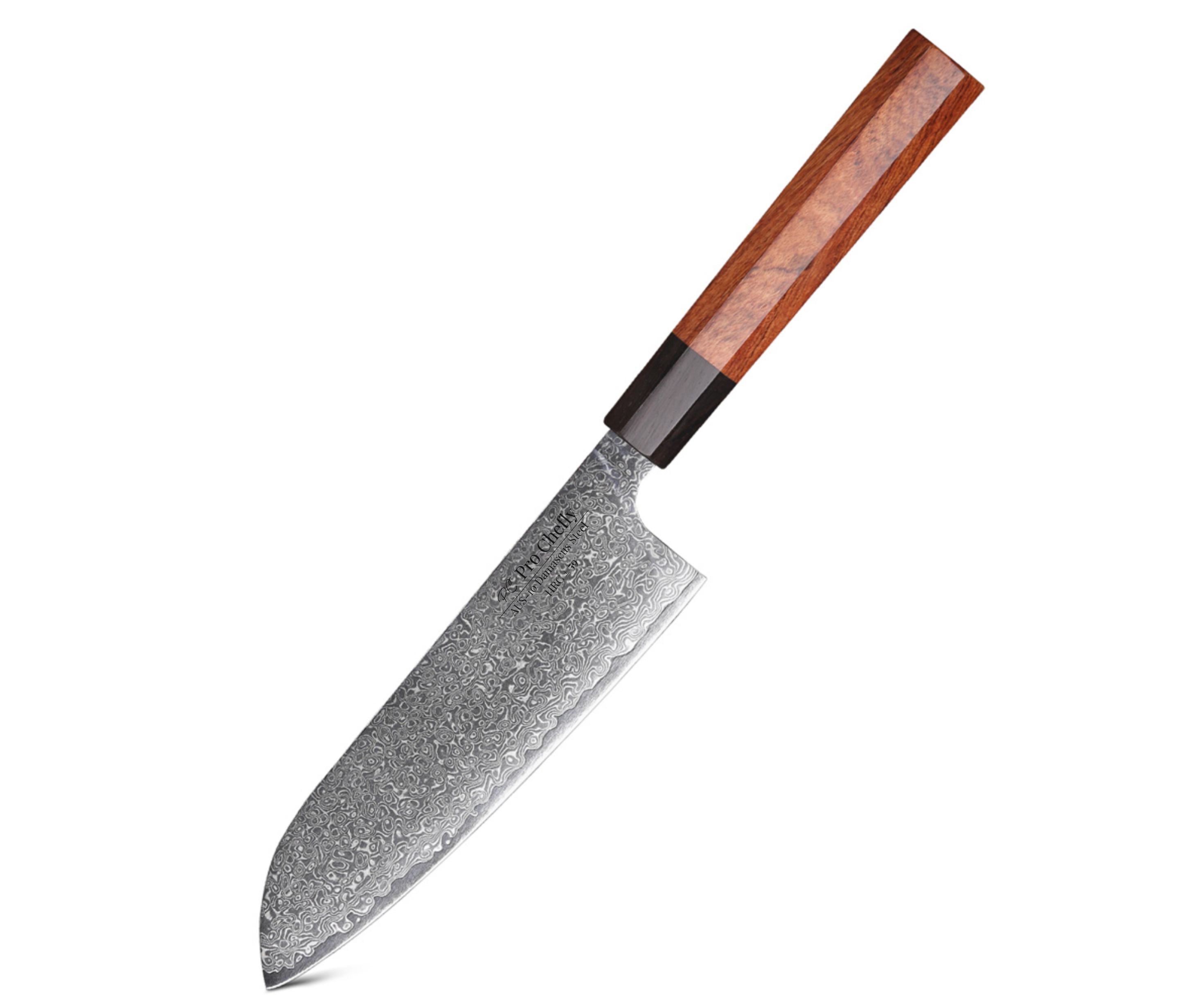Chef’s Overview
Dear Chefs, let’s talk about the part of your knife that never touches the food—but touches your hand every single time: the handle. A chef knife’s handle is more than decoration. It affects grip, comfort, balance, and how your knife feels after an hour of chopping. Today, we’ll slice into the best materials for chef knife handles, from timeless woods to modern composites, and figure out which one belongs in your kitchen.

Why Handle Materials Matter for Chef Knives
When I first started cooking, I thought a handle was just…a handle. As long as I could hold the knife, I didn’t give it much thought. But after a few long prep shifts, I realized the wrong handle makes your hand ache, slip, or tire out too quickly. The right handle, on the other hand, feels like it was custom-made for your grip. As we explored in Why Knives Matter – More Than Just Tools in the Kitchen, knives aren’t just about the blade—they’re companions. And a true companion should always feel good in your hand.
Best Handle Materials for Chef Knives
Wooden Knife Handles: Classic and Traditional Choice
Wood handles bring warmth, elegance, and tradition. Stabilized hardwoods and pakkawood resist water damage better than untreated woods, offering both durability and timeless beauty.
Resin Knife Handles: Durable and Stylish Option
Resin handles are waterproof, low-maintenance, and often crafted in artistic patterns. They combine durability with visual appeal, though they can sometimes feel slick compared to textured composites.
Plastic Knife Handles: Lightweight and Affordable
Plastic handles are practical, durable, and dishwasher-friendly. While affordable, they lack the premium look and balance of wood, resin, or composite designs.
Composite Knife Handles: Best Balance of Beauty and Strength
Composites like micarta or pakkawood blends combine the natural appeal of wood with modern toughness. They resist moisture, hold up to heavy use, and stay grippy even when wet.
Metal Knife Handles: Sleek but Less Practical
Metal handles, often stainless steel, are durable and modern-looking. However, they’re heavier, slippery when wet, and less comfortable for long prep sessions.
Octagonal Japanese Wa-Handles: Ergonomic and Lightweight
Octagonal wa-handles are a hallmark of Japanese knife design. They’re lightweight, ergonomic, and provide precise control. The shape prevents twisting in your grip, making delicate slicing easier. As I explained in How to Choose the Right Chef Knife for Beginners, handle shape is just as important as blade length when finding your perfect fit.
How to Choose the Right Knife Handle for Your Kitchen
Comfort and Grip Are the Top Priority
The best handle is one that feels natural in your hand. Knives like our 8" VG-10 Damascus Chef Knife and 7" VG-10 Damascus Santoku Knife feature ergonomic composite handles designed for all-day comfort.
Handle Durability and Maintenance Needs
If you prefer low maintenance, resin, plastic, or composites are ideal. If you appreciate craftsmanship and don’t mind upkeep, wood and octagonal wa-handles bring tradition and beauty.
Handle Weight and Knife Balance
Handles change how a knife feels overall. Heavy handles balance large blades, while lighter handles keep nimble knives quick and precise. As discussed in What Are the Pros and Cons of Investing in a High-End Chef Knife, balance is key to both safety and performance.
Pro Chefly’s Take on Knife Handles
At Pro Chefly, we’ve tested every material and chose designs that balance comfort, durability, and elegance. Our 7" VG-10 Damascus Nakiri Knife and 8.5" VG-10 Damascus Kiritsuke Knife showcase ergonomic handles that feel natural, even in marathon cooking sessions.
Final Thoughts: What Handle Materials Make the Best Chef Knives
So, Dear Chefs, what handle material makes the best chef knife? If you love heritage, go for wood. If you want modern durability, choose resin or composites. If you crave tradition and precision, octagonal Japanese wa-handles are unmatched. The right handle turns a good knife into your favorite kitchen companion—the one that makes every slice feel effortless.
Knife Collections
Shop the latest in Pro Chefly Damascus Knives
Chef's Notes
Stay up to date with the latest kitchen stories and recipes

- December 05, 2025
Dear Chefs, the holidays deserve a dish that feels slow, soulful, and unforgettable — and few things capture that spirit...

- November 30, 2025
Dear Chefs, there is something unmistakably comforting about bread pudding in November — the way the custard soaks into the...

- November 25, 2025
Dear Chefs, there is something special about roasted carrots in the fall — the way they caramelize, the way their...

- November 20, 2025
Dear Chefs, there is something magical about fall stuffing, especially when pumpkin and sage join the party. The aroma alone...

- November 15, 2025
Dear Chefs, November has a rhythm of its own — a slower pace, a softer light, and a craving for...

- October 31, 2025
Dear Chefs, fall baking is a ritual — the scent of cinnamon in the air, pecans roasting low and slow,...
- Choosing a selection results in a full page refresh.
- Opens in a new window.
